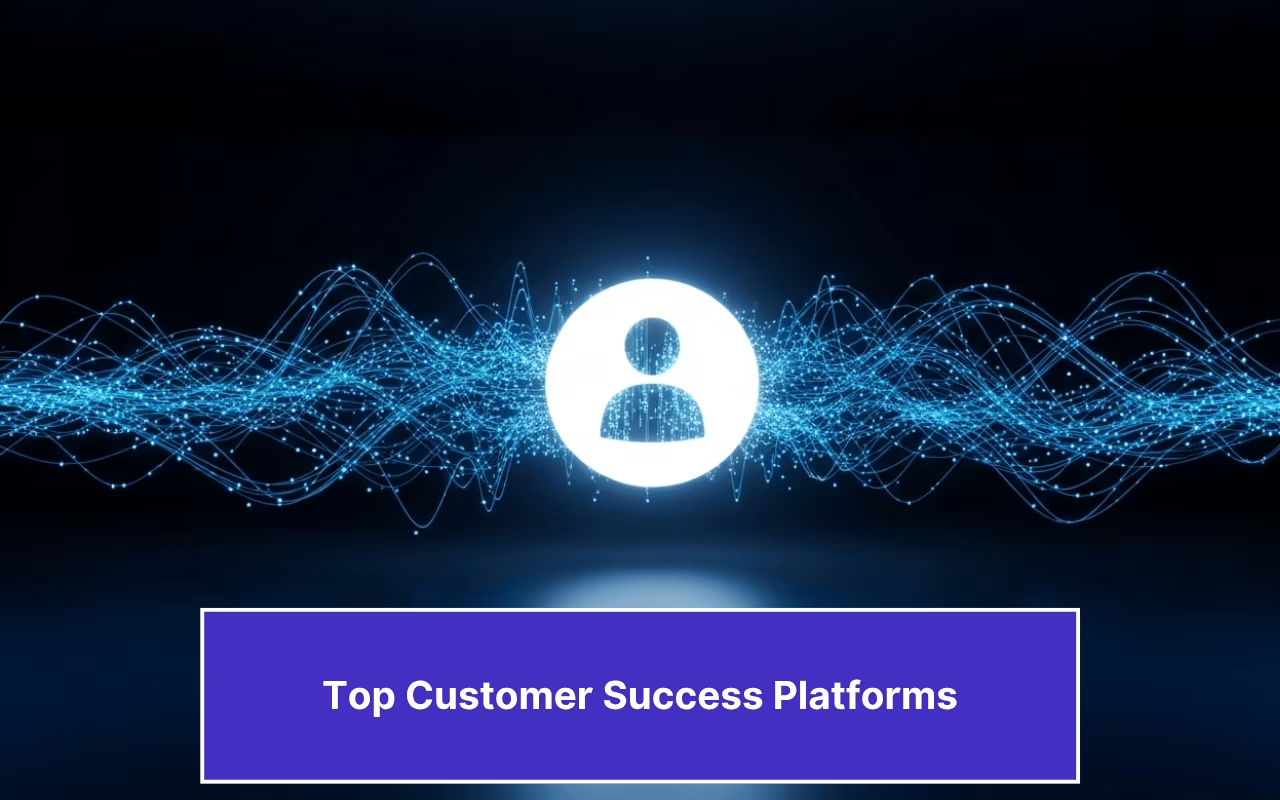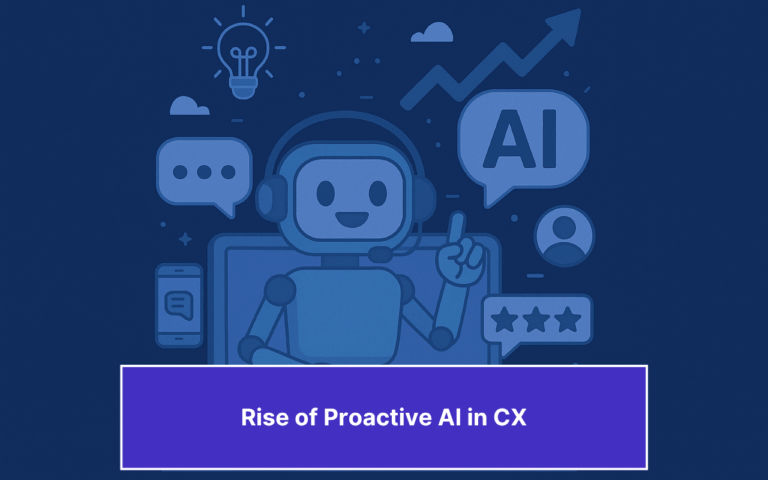Updated on February 11, 2025
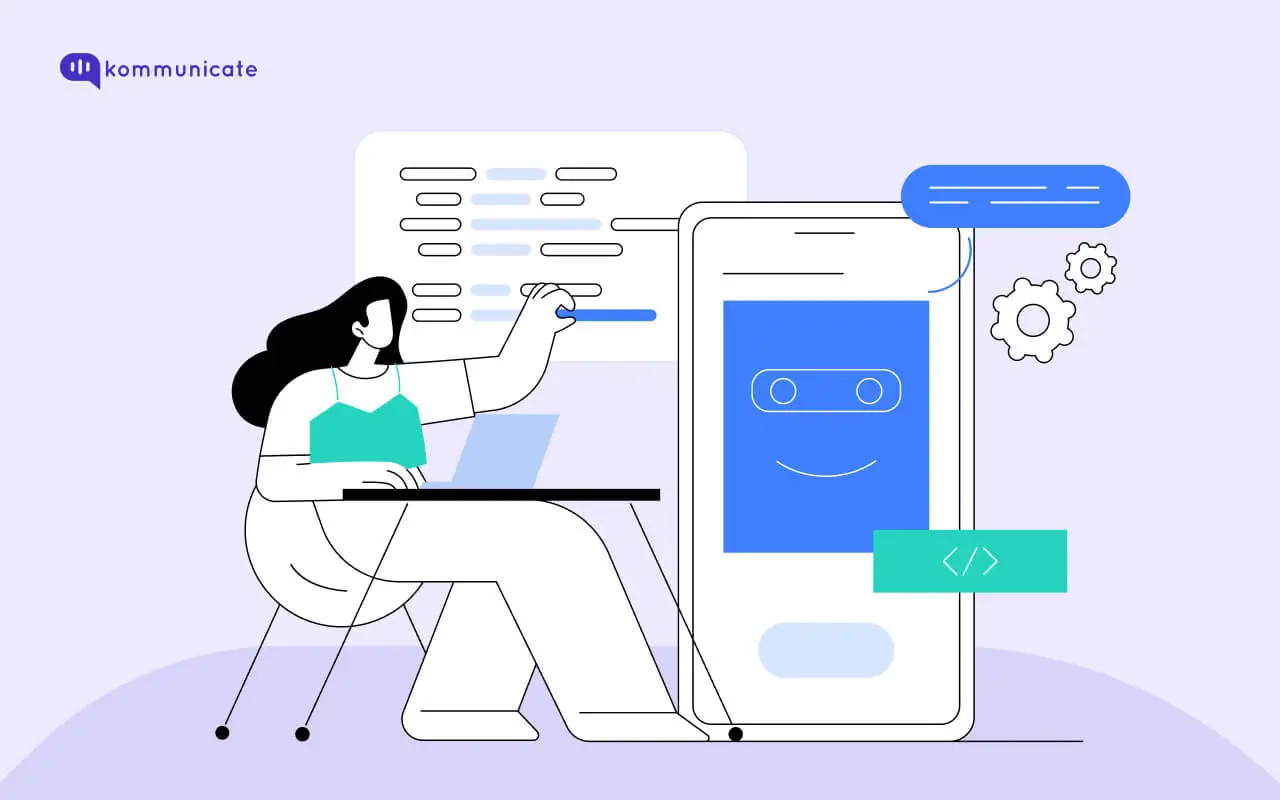
Have you ever bought something online or in person just to find that you can’t use the product without a lengthy setup process?
I recently bought a high-resolution audio product from a leading online store. Considering that I was new to the whole concept of High-res audio, I needed help to set up my device and had to email, message, and call various customer support reps.
If they had the concept of a Knowledge Base chatbot, my life would be so much easier.
In this article:
- What is a Knowledge Base?
- What is a Knowledge Base chatbot?
- How do the knowledge Base and chatbot work together?
- Key components of knowledge base chatbots
- Benefits of Knowledge Base Chatbots
- Limitations of Knowledge Base chatbots
- Knowledge Base Chatbot Use Cases
- How to build a knowledge base chatbot
- Knowledge Base chatbot Best Practices
- Conclusion
- Frequently Asked Questions(FAQs)
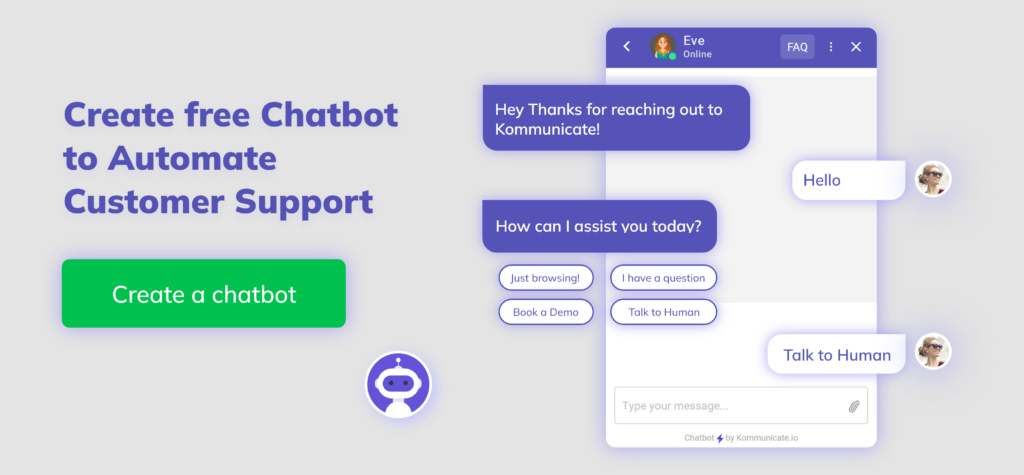
Knowledge Base chatbots can act as a single source of truth for all customer queries and even route the right customer representative faster. This can also be the first line of defense for proactive customer service, automating customer support and streamlining the process with AI-powered email ticketing for faster resolution.
If you are a business owner (regardless of size), a marketing manager, or a customer support/service professional, you should be reading more of this article that talks about Knowledge Base chatbots and what they can do for you!
Explore various chatbot implementations to enhance your business growth. Dive into the following articles for insights into various types of chatbots:
- FAQ Chatbot: Benefits, Types, Use Cases, and How to Create
- 13 ways chatbots are improving customer service
- Convert your Salesforce FAQ into a Chatbot
In this blog, we’ll delve into the exciting world of knowledge-based chatbots, unlocking their full potential for you. We’ll explore how they work, their various forms, and the key steps to building and implementing one for your unique needs.
What is a Knowledge Base?
A knowledge base is an online repository of information that provides users with a self-service option when it comes to solving an issue or addressing a query. This eliminates or reduces the need for a customer support representative for every issue or query the user requires.
Employees in a company refer to an in-house knowledge base that helps them adhere to corporate policies, look into best practices, and so on.
A customer-facing knowledge base helps a company’s customers use a product, and stay in touch with new feature releases and industry trends regarding products and services.
What is a Knowledge Base chatbot?
A knowledge Base chatbot is designed to answer user’s questions by understanding their questions or requests, accessing relevant information from its knowledge base, and then providing accurate and personalized responses. They are used in various fields like customer service, employee support, education, healthcare, and e-commerce to answer questions, complete tasks, and offer various other forms of assistance.
How do the knowledge Base and chatbot work together?
The Knowledge Base needed to power a Knowledge Base chatbot requires it to be dynamic and receive inputs from the right sources. Here is the process to understand how the knowledge base and chatbot work together:
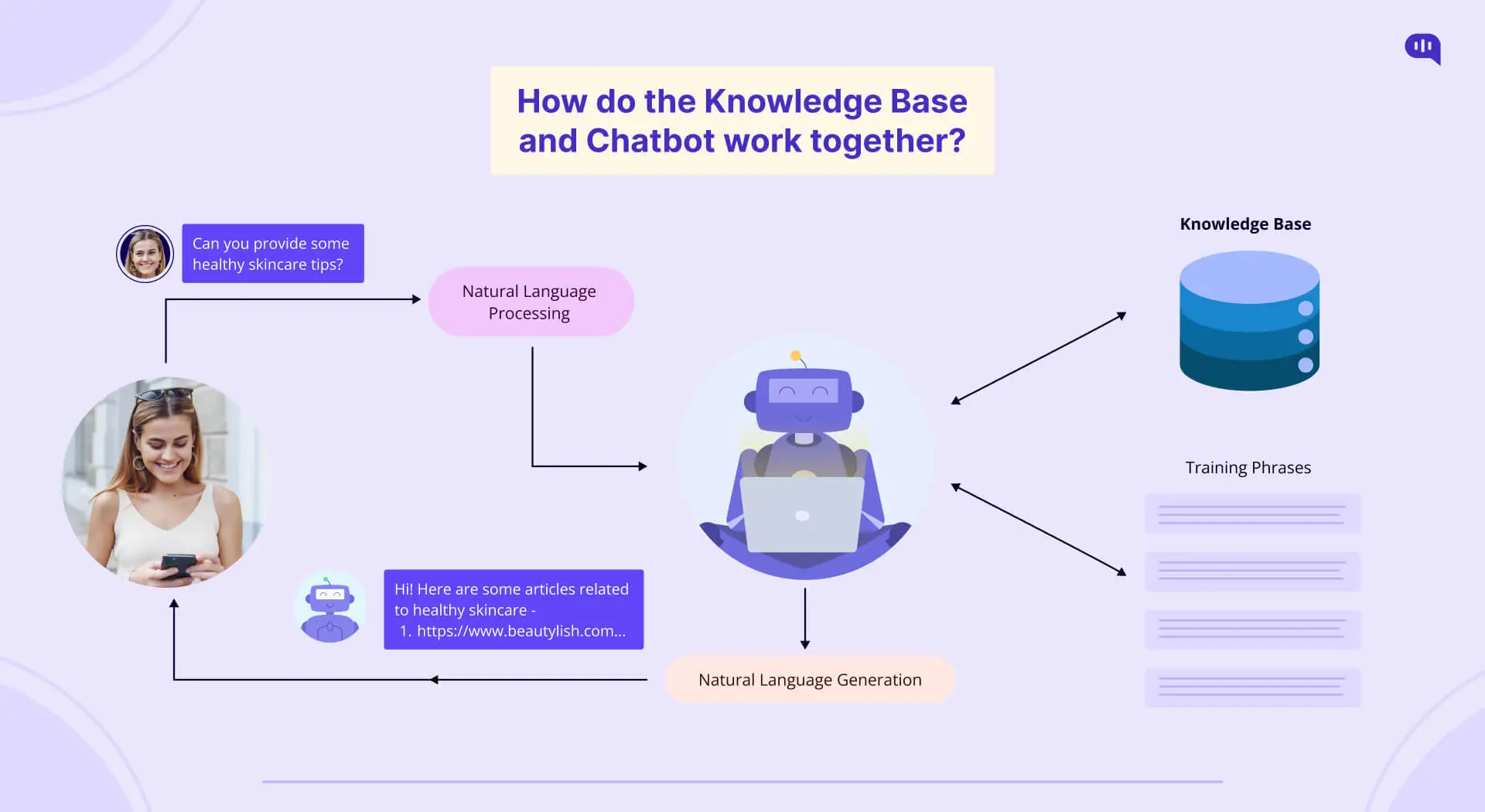
Start Building Your AI Chatbot Without Sign up- User Query: The user types in a query for the required information about a product or service such as if a HIgh-Res audio player is compatible with the Windows ecosystem.
- Chatbot processes query: Your customized Knowledge Base chatbot will analyze the query according to the training phrases and data provided during the training phase of the chatbot. Next the chatbot instantaneously and simultaneously matches the query with the required information in the Knowledge Base.
- Chatbot displays answer: The Knowledge Base chatbot provides the answer to the user such as the instruction manual for the device. It could also provide links to help articles to explain installation procedures.
Key components of knowledge base chatbots
There are a few components of Knowledge Base chatbots you need to know:
1. Knowledge Base
The informational core of the chatbot, the Knowledge Base stores all the information it can use to answer questions and complete tasks. It can be structured in various ways, like FAQs, articles, manuals, or even product data.
The quality and structure of the knowledge base determine the chatbot’s effectiveness. You need to regularly update and maintain it. You can also use knowledge base software to create a knowledge base and integrate it with a chatbot.
2. Natural Language Processing (NLP)
This element acts as the interpreter, translating user input (text or speech) into a format the chatbot understands. It includes
a. Intent Recognition: Identifying the user’s goal or desired action.
b. Entity Recognition: Extracting key information like names, dates, or locations.
c. Sentiment Analysis: Understanding the emotional tone of the user’s message.
3. Dialogue Management
This component ensures the conversation flow, is coherent and relevant. It includes
a. Context awareness: Keeping track of previous interactions to personalize responses according to the user session.
b. State tracking: Remembering the conversation’s current stage and user intent.
c. Dialogue flow control: Deciding what data to provide next and how to guide the conversation.
4. Response Generation
This component takes the processed information and generates a natural language response. It considers
a. Relevance: Matching the response to the user’s intent and query.
b. Brand Voice: Maintaining a consistent brand voice and tone.
c. Clarity: Presenting information in a clear, precise, and easily comprehensible manner.
Benefits of Knowledge Base Chatbot
While self-service Knowledge Bases existed before chatbots, the customers had to search for the information they required themselves. They would have to filter out the right information among articles or FAQs to solve the problem they are facing.
This sounds sufficient, but the odds of the customer locating the information they needed were not particularly high. In some cases, the customers would never find the essential information required.
With the advent of conversational AI and chatbots powered by AI, customers can now interact with the chatbot which will search the information required, much faster and more accurately.
Here are a few advantages of integrating your chatbot with a Knowledge Base
1. Boost customer satisfaction – Customers use Knowledge Base chatbots as a self-service feature giving them ownership of their user journey. This directly leads to higher customer satisfaction as customers need to go through fewer touchpoints, saving time and effort.
Knowledge Base chatbot benefits also include a personalized experience for each customer making the experience more positive for the user.
2. Increased efficiency in customer service – since chatbots handle a large volume of repetitive queries that most customers are expected to face, it means customer reps have greater bandwidth for complex queries.
3. Reduce customer service response time – Knowledge-based chatbots are available round the clock without downtime. Such 24/7 availability means that the customer can rely on the brand to answer queries whenever they arise. This impacts conversion rates and reduces cart abandonment rates significantly.
4. Omnichannel consistency – with chatbots such as these you can pick up where the customer left off regardless of the platform. Just ensure you integrate your chatbot across platforms first!
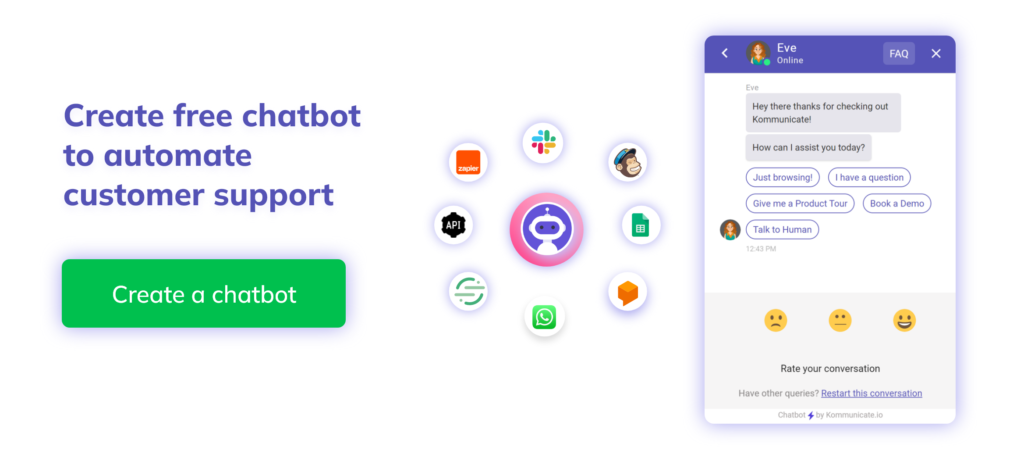
Limitations of Knowledge Base chatbots
I have to begin by stating that the benefits of Knowledge Base chatbot implementation far outweigh the limitations. That being said:
- Such chatbots cannot handle complex queries and must direct the same to a human agent.
- The chatbot is only as effective as the dynamic knowledge base maintained by the customer support staff. Such maintenance requires periodic manual intervention.
- Customer support and service staff in charge of maintaining the knowledge base need to be highly skilled at updating the knowledge base.
8. Knowledge Base chatbot use cases
Here are a couple of Knowledgebase chatbot use cases that will highlight the way such tools can help your business:
1. Customer Service
The domain that is suited for AI-powered chatbots, customer service benefits from Knowledge Base chatbots through
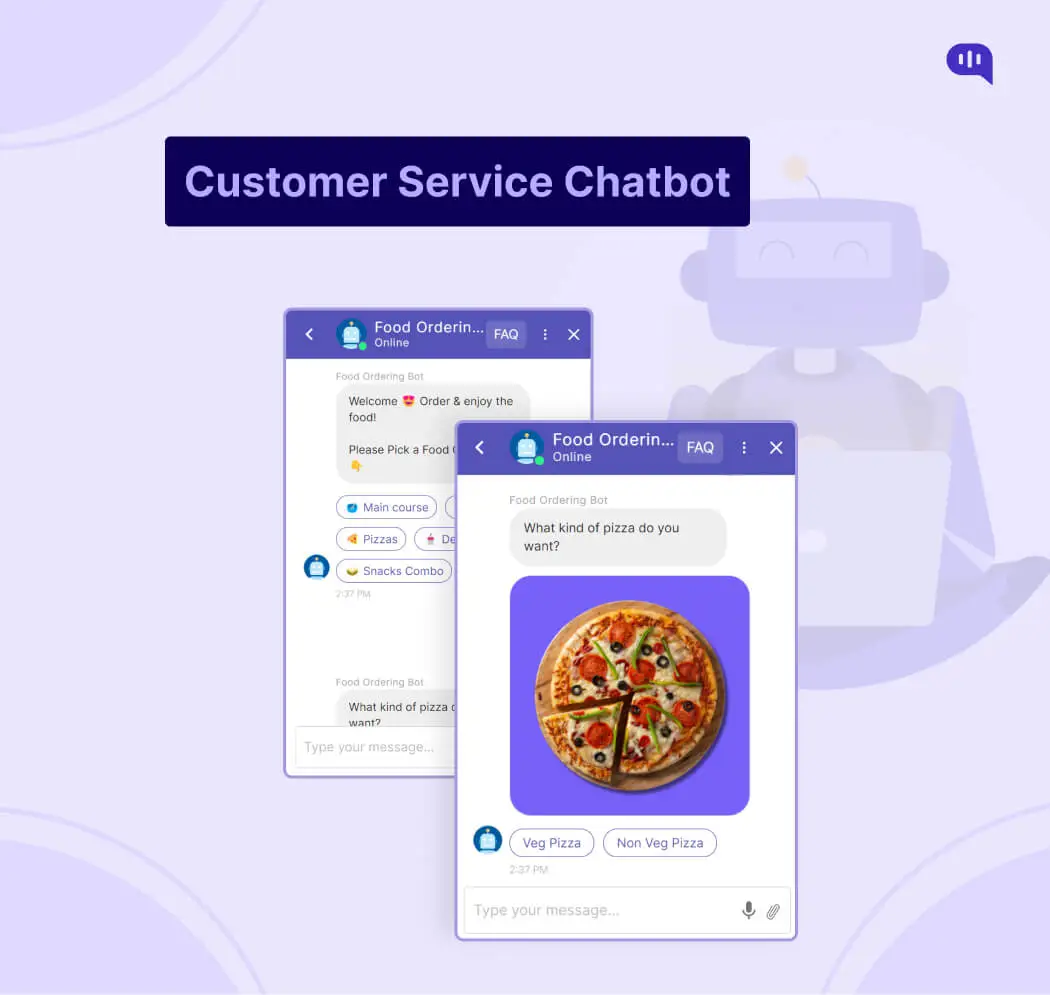
a. 24/7 Support: Handle FAQs, offer personalized experiences, and generate leads, even outside business hours.
b. Improved Efficiency: Free up human agents for complex issues and streamline the sales process.
2. Employee Support
Wouldn’t you agree that a chatbot would make it easier to navigate your company’s corporate policies? Here’s how:
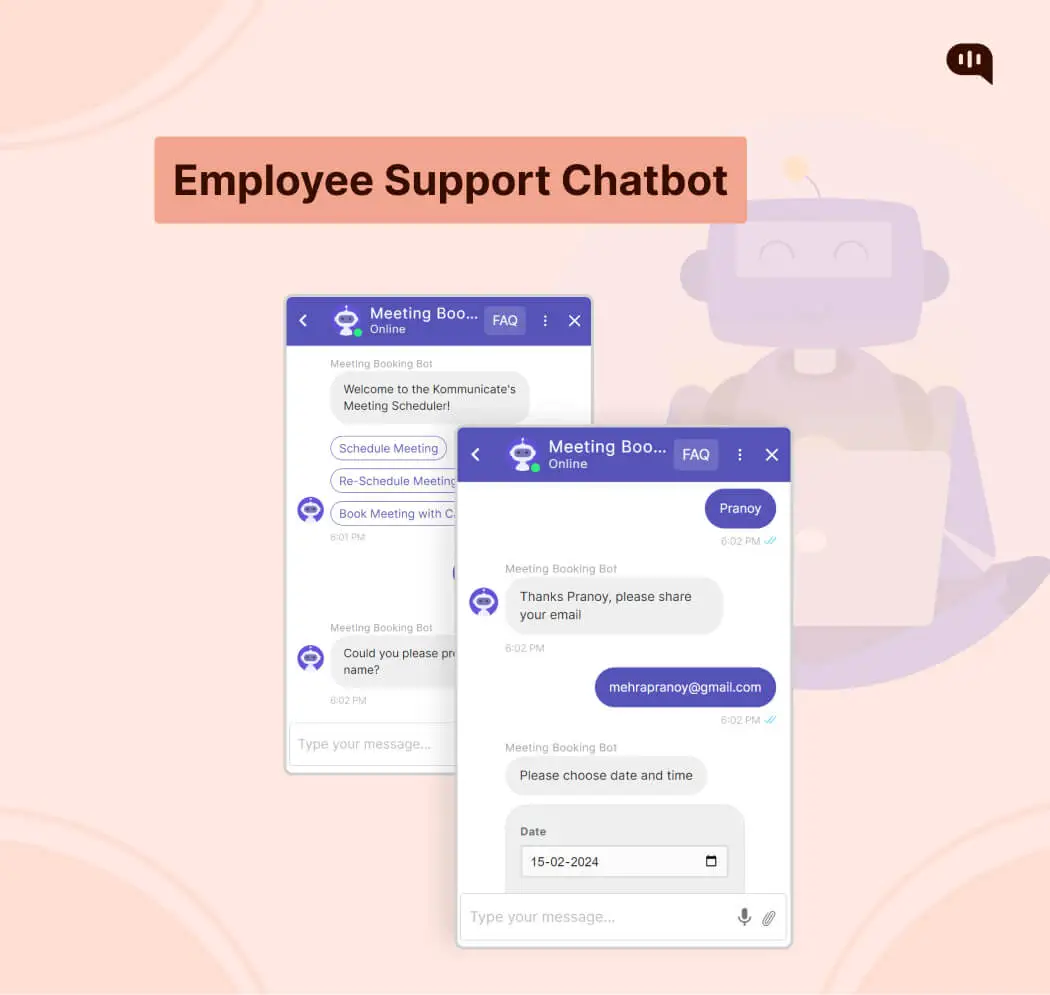
a. Onboarding: Guide new hires and answer basic questions.
b. HR Helpdesk: Handle routine inquiries and offer self-service options.
c. Knowledge Sharing: Provide access to internal resources and improve information flow.
3. Education
While learning can never be fully automated, access to relevant information for educational purposes would make learning simpler through
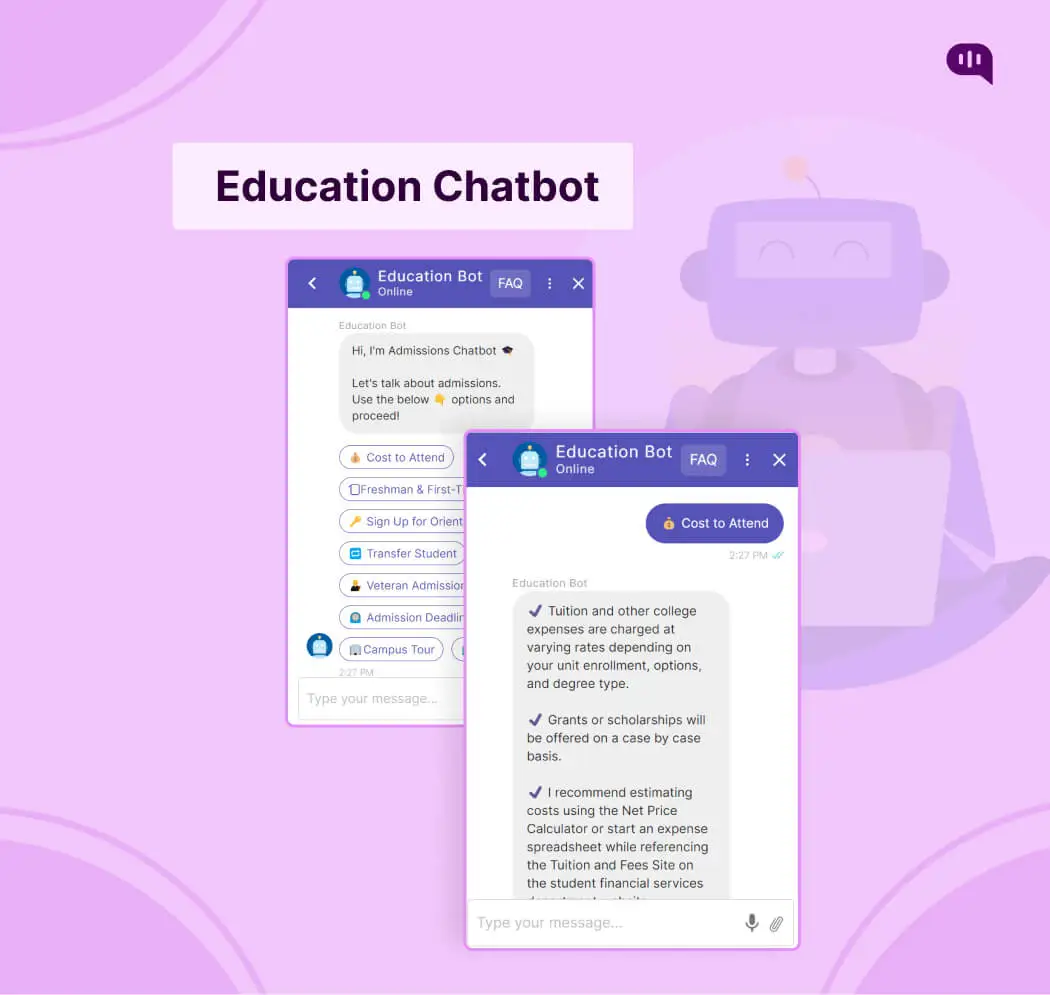
a. Personalized Learning: Adapt to individual needs and learning styles.
b. 24/7 Support: Answer questions outside of class and offer practice exercises.
c. Accessibility: Cater to diverse learners with multiple languages and formats.
4. Healthcare
The COVID pandemic made the use of Knowledge Base healthcare chatbots a crucial step to keeping people safe and vaccinated. Beyond life-saving uses, it is useful for:

a. Patient Support: Schedule appointments, answer basic questions, and manage the administration of medication.
b. Mental Health: Provide basic support and resources as a first line of help.
5. E-commerce
Haven’t you ever had trouble finding that unique pair of sneakers online? Knowledge Base chatbots can help with
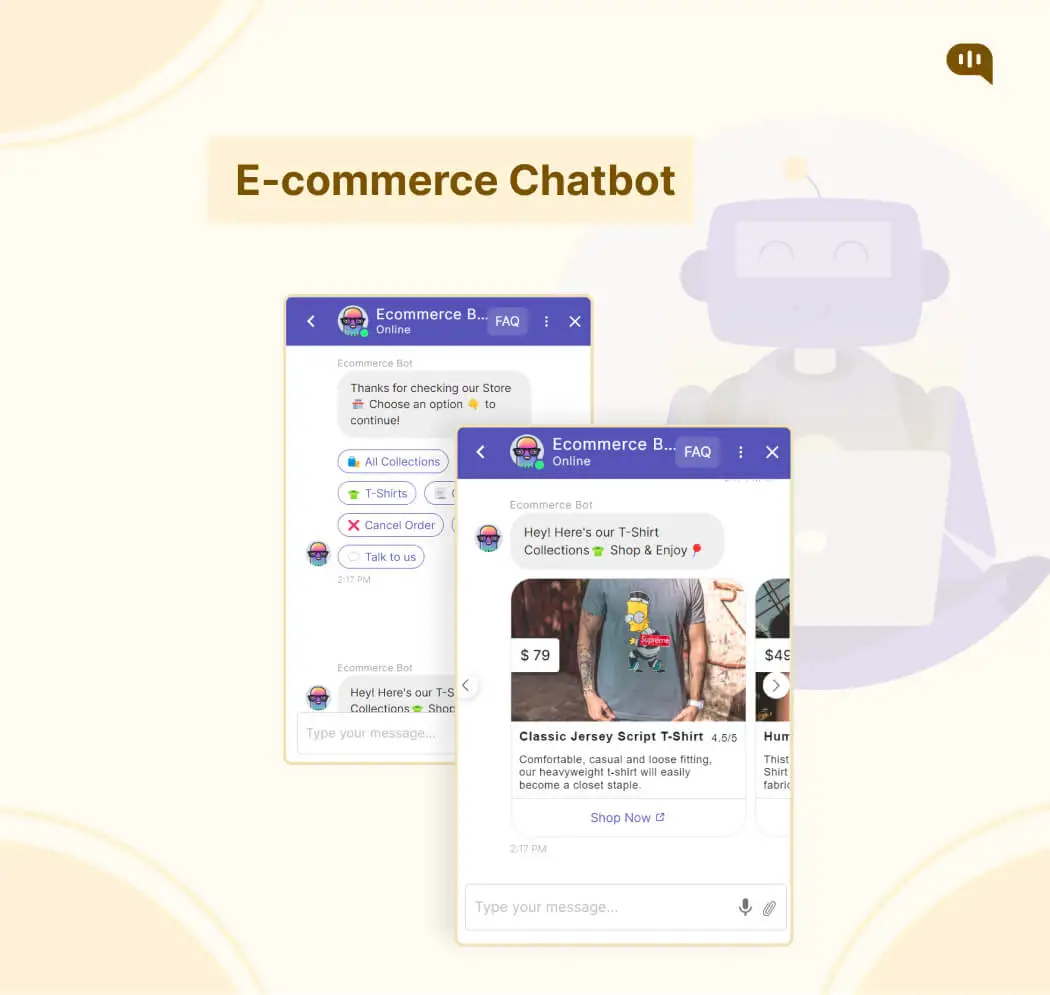
a. Personalized Shopping: Recommend products and facilitate purchases directly through the chatbot.
b. Improved Service: Track orders, handle returns, and collect customer feedback.
c. Improve Conversion: Higher conversions and lower cart abandonment rates.
How to build a knowledge base chatbot
A dynamic knowledge base is central to empowering your chatbot with the most relevant information. When the chatbot has all the information the customer would expect, then
Creating a strong knowledge base is crucial for making your chatbot a valuable asset. Let’s explore a three-phase approach to ensure your chatbot effectively delivers the information users need:
- Define Your Purpose and Audience – Clearly define the problem you’re solving and who you’re helping (e.g., a customer service bot answering product FAQs or an HR support bot). This guides all your decisions.
- Build Your Knowledge Base – Gather relevant information (FAQs, documents, etc.) and organize it logically for easy access. Ensure accuracy by regularly proofreading and updating.
- Choose Your Chatbot Platform – Research options based on features, ease of use, pricing, and compatibility with your needs. Popular platforms like Dialogflow and Rasa offer helpful tools like natural language processing and knowledge base integration.
- Map the Conversation Flow – Design potential user queries, chatbot responses, and branching paths for various scenarios. Use flowcharts or scripts to visualize and refine the interaction, while adding your brand’s personality for an engaging experience.
- Test, Iterate, and Improve – Thoroughly test your chatbot, gather real user feedback, and continuously update it based on insights. Remember, building a successful knowledge base chatbot is an ongoing journey. Start small, focus on user experience, and prioritize data security for a valuable tool that serves your audience effectively.
Knowledge Base chatbot best practices (Training the chatbot)
If you want to train your knowledge-base chatbot in the most efficient manner possible, you can refer to these best knowledge-base chatbot best practices:
- Use Case: Choose use cases based on customer needs. The right use cases ensure the information your chatbot acquires and provides is relevant and precise.
- User Intents: Understand user goals behind questions, and create specific intents for each. The more relevant intents you create the better your chatbot will function – provided the intents are precise.
- Intent keywords: Identify keywords to help the chatbot understand intent.
- Phrases: Prepare for user variations in phrasing the same question – throw in a mix of similar phrases to train your chatbot better
- Team training: Empower your team to help train and improve the chatbot.
- Personality: Match your chatbot’s voice and personality to your brand. A consistent brand voice should extend to your chatbot as well since it will be handling your customers in droves!
- Progressive improvement: Continuously monitor and improve chatbot performance based on data so that chatbot benefits are optimal.
Conclusion
Chatbots are versatile tools and Knowledge Base chatbots are one such specialized tool that you can use to begin your omnichannel support journey. This article has talked about what such a chatbot is and how you can build one to supercharge your customer service efforts across channels. In case you are keen to learn how Kommunicate can make this happen for you and your business, just go to Kommunicate.
Frequently Asked Questions (FAQs)
a) How can I ensure my Knowledge Base chatbot is secure and protects user data?
Your knowledge base chatbot can be secured and protect user data by using:
- Encryption
- Authentication and authorization
- Streamlined protocols
- Training
b) Is it difficult to create and maintain a knowledge base for a chatbot?
Creating a Knowledge Base for a chatbot is fairly simple with the majority of the time and effort required to identify sources of the information. Integrating the relevant parts of your CRM or helpdesk into the knowledge base is the key to creating a knowledge base.
c) Is building and maintaining a knowledge base chatbot expensive?
No! The cost of building a chatbot for the knowledge base is a one-time expense and offers exponential ROI. Maintaining a knowledge base is relatively inexpensive and offers a similar ROI.
d) Can I integrate a knowledgebase chatbot with my existing CRM or helpdesk system?
Yes! That is the beauty of a Knowledge Base chatbot. It can source information from your native helpdesk or CRM
e) How can I measure the success of my Knowledge Base chatbot?
You can easily measure the success of your Knowledge Base chatbot by analyzing metrics such as
- Customer queries resolved (by Knowledge base chatbot)
- Time to query resolution
- Conversion rates (post query resolution)
- Cart Abandonment rate (post query resolution)
f) Can Knowledge Base chatbots replace human customer service agents entirely?
As you might have heard before, AI chatbots have always been aimed at assisting humans with tasks and not to replace the people doing these tasks entirely. This means that AI can cut down on non-creative tasks and enhance human bandwidth for complex tasks that need reasoning, experience, and creativity.
Naveen is an accomplished senior content writer with a flair for crafting compelling and engaging content. With over 8 years of experience in the field, he has honed his skills in creating high-quality content across various industries and platforms.


